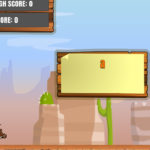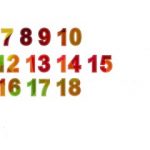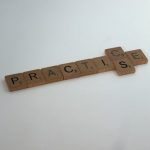July 25, 2022
What makes a successful typist?
What makes a successful typist?
Touch typing is a technique that creates a structure where you have to place different fingers on specific areas on your keyboard. You are using all your 10 fingers, and each one is in charge of a section or a column on the keyboard and it all starts with the home row.

Typing is something that is becoming more and more prominent nowadays and remains a foundational life skill so getting your child to learn this skill properly is extremely necessary and will be of benefit to them for the entirety of their life. It can not only help them with their school work but can also set them up with an advantage in later life when it comes to exploring job opportunities. Many jobs in the modern world of work now require quick typing skills, but with advances in technology that’s set to become even more important.
The things which make a successful typist are:
Repetition and routine, posture, home keys, covering keyboard with skin
The first key to learning to type is learning the correct hand position. Starting with your pinky on the A key, your left-hand fingers rest on the A, S, D, and F keys. The right-hand pinky goes on the ; key, and fingers rest on the J, K, L, and; keys. These keys are the home row keys. Your thumbs should either be in the air or lightly touch the spacebar key. Once you have the hand positions down, you can practice touch typing – typing without looking at the keyboard. By doing so, your muscles will memorise the movements and even key patterns.
For example, when you type frequently used combinations such as “the”, your motor system will pick up on this. With muscle memory, you can type at a much faster speed. In addition, when you type looking at the screen, you are able to catch errors faster. This frees up cognitive attention and processing power for the content of the task, so writers can focus on the work they are producing vs. the mechanics of recording it in electronic format.
You probably know roughly where the keys are located on the keyboard, but the goal of improving your typing skills is to do it without looking at the keys. Set yourself up for success by putting your body in the proper position for comfort and avoiding injury.
Follow these seven steps to improve your typing posture and positioning:
- Sit up straight in a chair with the keyboard or laptop at a comfortable height on the table or desk.
- Put your feet flat on the floor.
- Place the screen so it’s 15 to 25 inches from your eyes, and in a position where you are looking down slightly.
- Keep your elbows bent at a 90-degree angle and try to expose your shoulders, arms, wrists, and elbows to as little strain as possible. You want to avoid developing any habits that would cause repetitive stress injury long-term.
- Place your left and right pointer fingers on the F and the J keys. Many keyboards have a little raised tab on those letters so you can orient your fingers without looking. Let the rest of your fingers on each hand fall on the remaining keys in the home row (D, S, and A for the left hand; K, L, and the “;” symbol for the right hand). Both thumbs rest on the space bar.
- With your fingers positioned on the home row, you’ll train your hands to reach all the other keys without having to look. This is called “touch typing.” Essentially, each finger is responsible for the keys just above and below the home row key it sits on. Try to imagine vertical dividers around each finger. The right pinky is responsible for the return, shift, and delete keys, and the left pinky is for the shift, caps lock, and tab keys. It may feel awkward at first since our pinky fingers aren’t always strong, but with practice, it will feel more natural.
It is recommended to use a cover to cover the keys to build up a repetitive routine and to boost your confidence when touch typing

Key ingredients need to be a successful touch typist – Motivation and concentration
People often quote Malcolm Gladwell’s ideas on how to make something a habit. In his book ‘Outliers’, he says “It takes 10,000 hours to master anything.” 10,000 hours translates into 416 days, or over a year of your life—if you practice 24 hours a day!
While that amount of time applied to typing practice might seem much too daunting, neuroscience research suggests that our brains don’t develop based on an inherent set of preprogrammed patterns. In other words, our brains are always ready for new skills. Practice leads to learning in the developing and the mature brain, and the resulting structural changes to the brain encode that learning. Once you learn the basics of finger placement and where they move on the keyboard, practicing with intention gives you lifetime mastery that will make every instance of typing easier.
The Typewiz bot helps your child to remain engaged by providing help and tips to learn how to touch type. Our bot analyses your child’s performance and encourages them to type better.
Typewiz offers a report showing how your child is progressing on the course. The report shows the following information:
- Exercises Completed
- Highest Score
- 100% Scores
- Excellent Scores
- Average Accuracy
- Coins Earned
- Average WPM
- Top WPM
Information can be shown weekly, last six months, last year, or all time. Our report both accuracy and wpm graphs. So it can easily be viewed. Reports can be printed off. Course certificates are available to print as well. These reports often motivate children as they want to beat their wpm or exercises completed from the previous day.
Touch typing program – need to be fun and gamified like Typewiz!


It is vital when learning how to touch type it is an engaging and interactive experience. Typewiz allows children to earn an avatar as they complete each lesson in Typewiz. Thus motivating your child to learn how to touch type. Typewiz has fun and interactive typing games for your child to enjoy. Your child can compete with other children and see who is top of the leaderboard. A virtual coin is used for each game. This is earned by your child’s performance on the Typewiz course which prompts them to achieve high scores or improve their wpm. Thus motivating them to complete exercises fast and accurately. These incentives stimulate children to complete more exercises and improve their wpm which improves their accuracy.
To access a seven-day free trial click on the following link
Read More
 Typewiz Login
Typewiz Login






